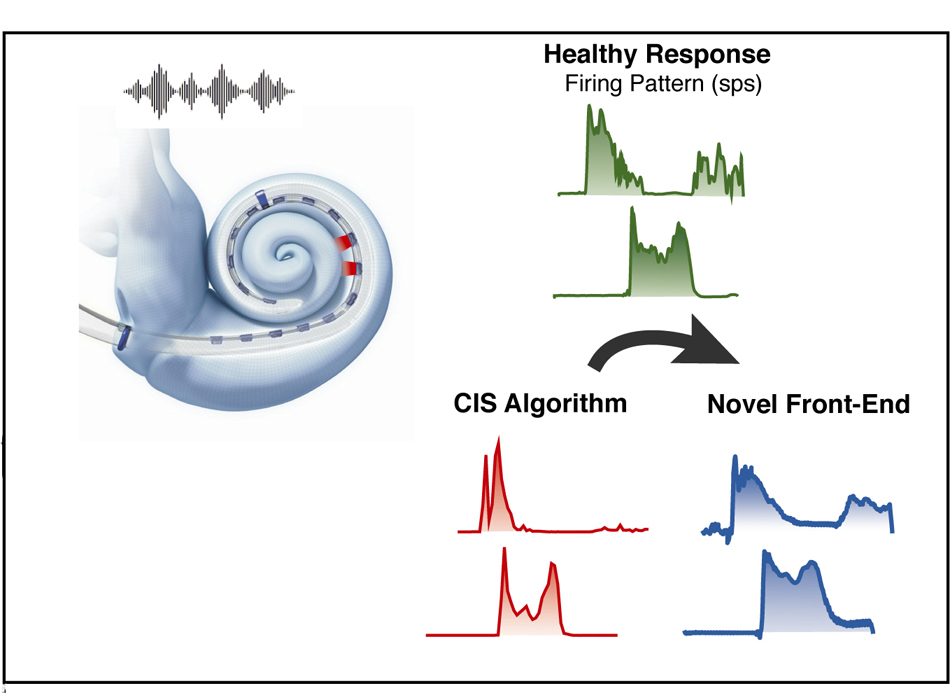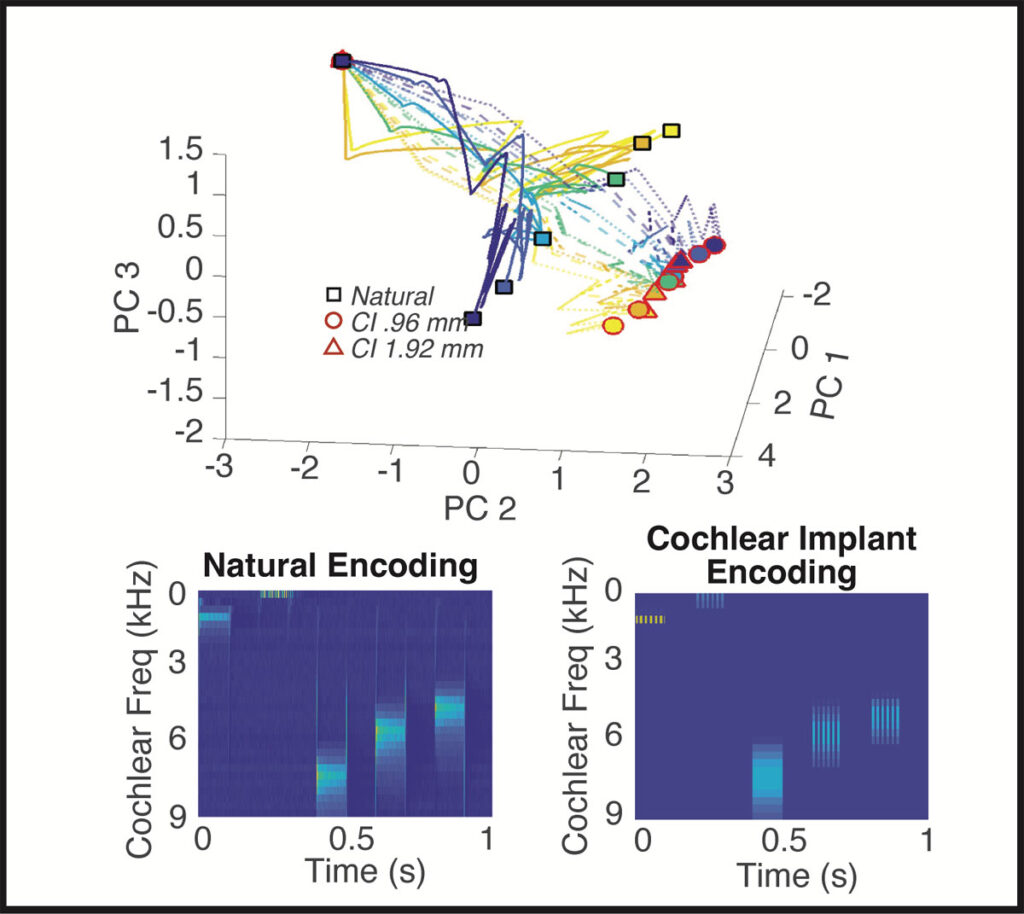Restoring Pitch Perception in Cochlear Implants
Cochlear implants (CIs) have been able to successfully restore speech perception for the last several decades with the Continuous Interleaved Sampling (CIS) algorithm that depends on place coding. However, CIs have consistently struggled to convey pitch information. Pitch is thought to be embedded in fine-timing of spiking. With this in mind, the goal of this project is to create neural prostheses capable of producing more naturalistic population responses. We have been working on an algorithm that can turn a natural input (sound for the cochlea) into the healthy firing patterns produced by a system (healthy cochlear population responses). First, I worked on developing a front-end for a CI that in real-time could transform sound into electrical stimulation from implanted electrodes. Leveraging the results of my studies of pulsatile stimulation or other paradigms (such as direct current stimulation), we can them optimize stimulation pattern to produce an induced firing pattern as close as possible to the desired outcome.
In this work, I tested the ability of a recurrent neural network (RNN) -based algorithm to learn cochlear responses and found that the algorithm could predict a more naturalistic target firing pattern at the speed and with a small enough network size for an implantable device.
Steinhardt, C. R., & Fridman, G. Y. (2021). Cochlear Implant Front-End Processing Using Machine Learning. 2021 42nd Annual International Conference of the IEEE Engineering in Medicine & Biology Society (EMBC) (in submission)
Steinhardt, C.R. & Fridman, G.Y. (2020). Method and System for Processing Input Signals Using Machine Learning for Neural Activation (U.S. Provisional Patent No. 63/150,829). U.S. Patent and Trademark Office. Filed February 18, 2021

Understanding How Pitch Information Is Lost in the Auditory Stream
CIs currently restore speech perception (in non-tonal languages, such as English) – a difficult task for machine learning algorithms – with 100% accuracy. Meanwhile, using the same signal, pitch perception is restored between one semi-tone to two octaves of discriminability, depending on the patient. It is difficult to probe the deeper auditory area responses to CI stimulation, due to the invasiveness of a procedure. In this work, I aim to ask how speech perception is preserved while pitch perception breaks down in variable ways. I use a deep neural network as a surrogate auditory processing stream and ask (1) what aspects of CI inputs lead to differences in neural representation space and (2) how we may be able to alter cochlear implant stimulation inputs based on our understanding of this representational difference to improve restoration of tone perception while preserving speech perception.
Steinhardt, C.R. (2023). A Network Model for Investigating Processing Differences between Natural and Cochlear Implant Inputs to the Auditory System (Poster)
